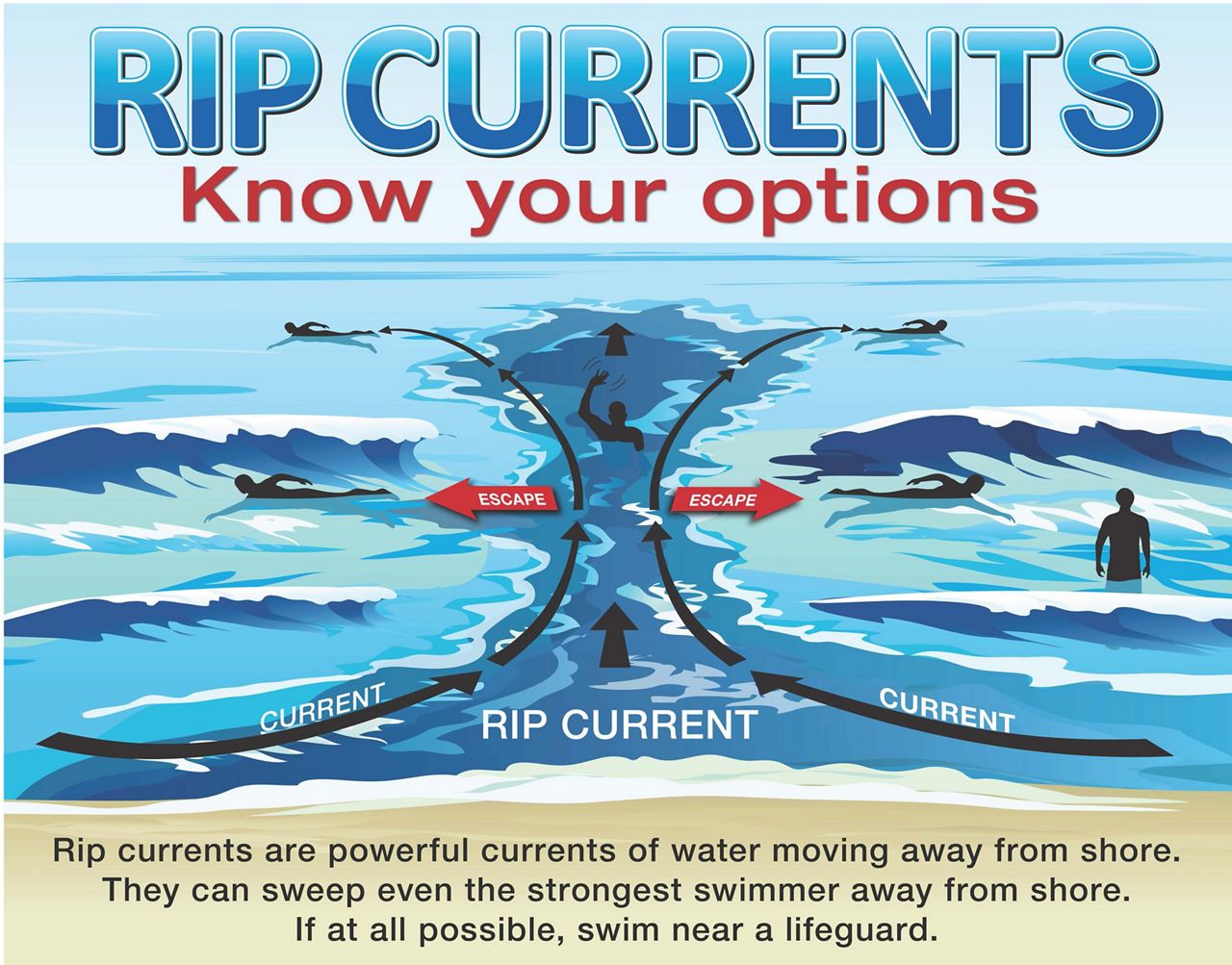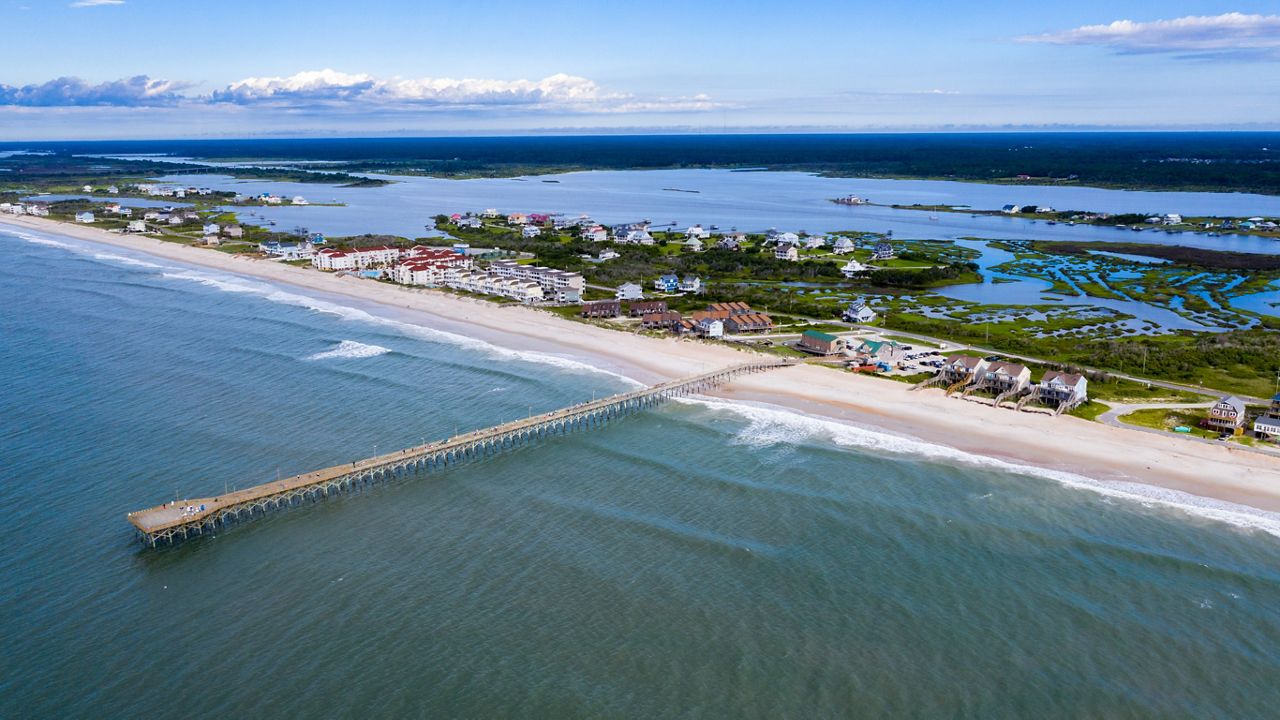RALEIGH, N.C. — Over the last decade you might be surprised to learn that rip currents and other beach hazards have been more deadly than floods, lightning and tornadoes combined!
World Drowning Prevention Day is July 25, so it’s important for us to remember how to stay safe at the beach this summer by knowing how to spot rip currents.
Over the last couple of decades, North Carolina has had an average of eight people die from rip currents per year.
From 2013 to 2022, there were 69 fatalities at beaches in North Carolina resulting from rip current drownings or some other beach hazard, like shore break or longshore currents.
That number is surprisingly higher than the total number of deaths that occurred in the state from tornadoes, lightning strikes or flash flooding during that same time period, which was 66.

Many people wonder why rip currents are such a deadly phenomenon at the beach, but many people also don't know how to spot rip currents or how to know if it's safe to swim in the ocean.
If you’re not familiar, rip currents are narrow, fast-flowing channels of water that can pull swimmers away from the shore and into deeper waters. The speed of a rip current can move faster than Olympic swimmers causing anyone trying to fight the current to get exhausted and be unable to swim.
Of the fatalities in the last 20 years, 27% were “good Samaritans” attempting to rescue others. Lifeguards want anyone attempting to save someone who may be drowning at a beach without a lifeguard to always bring a flotation device with them.
The best way to survive a rip current is to either let it carry you out to sea and swim at an angle to the shore, or to swim parallel to the shore while in the rip current to get back to the sand.
Remember to never swim alone, and not to float in water that you cannot swim in.
Swim at a beach with a lifeguard! The United States Lifesaving Association (USLA) has calculated that the chance for a drowning at a beach protected by USLA lifeguards to be at 1 in 18 million (0.0000055%).
That means you’re 27 times mores likely to win an Olympic medal than to drown at a beach with a lifeguard.

A reminder that if you’re heading to the beach soon, always check the rip current forecast before you hit the water. You can also make sure the currents are adequate for swimming by checking the color of the flags on the beach.
Never swim at a beach with a red flag!
Our team of meteorologists dives deep into the science of weather and breaks down timely weather data and information. To view more weather and climate stories, check out our weather blogs section.








